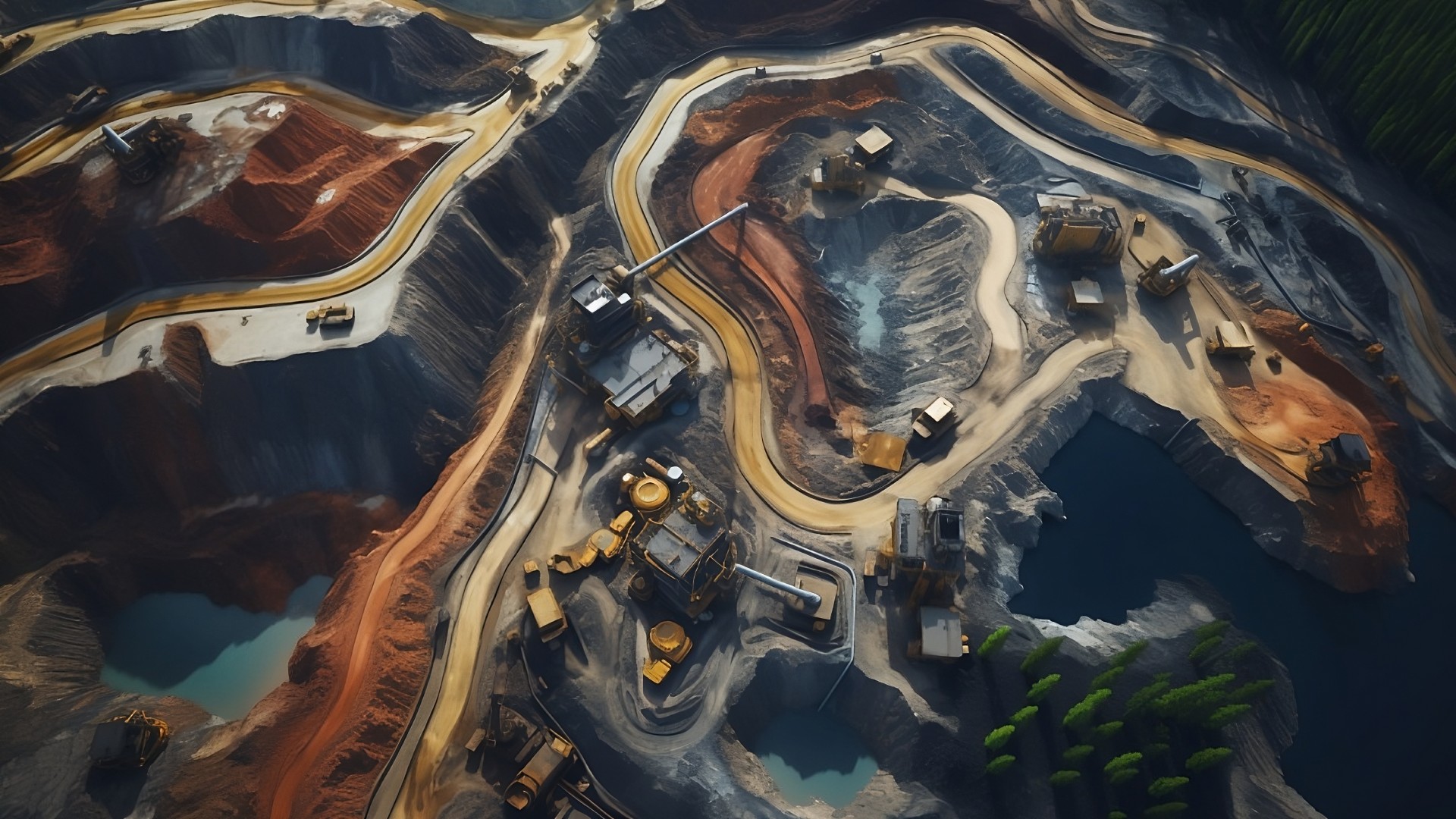



Chunky pieces of yellowcake form the basis for nuclear fuel, powering homes and businesses around the world without emitting greenhouse gases. But mining that uranium — a critical process in nuclear energy production — carries significant environmental and safety implications. How does uranium mining affect the planet?
Uranium mining involves land disturbance, particularly through open pit mining. This technique involves creating a large pit and removing overlying rock to access the mine. Underground mining has a moderate environmental impact — miners create access tunnels and shafts, but they do not have to remove as much rock in the process.
In-situ mining involves the least ground disturbance. When uranium ores are concentrated in gravel, sand or groundwater, miners may dissolve the uranium and pump it out. This technique is not licensed in areas with potable groundwater.
Regardless of the method used, excavation, the removal of vegetation and other forms of altering the landscape can lead to habitat destruction and biodiversity loss. Preservation and restoration efforts are crucial to mitigate these effects.
One of the most notable concerns associated with uranium mining is soil and water contamination. The byproducts of uranium extraction are solid waste called tailings and liquid waste called raffinates.
This toxic waste can leach heavy metals and radioactive material into the surrounding soil and water bodies. The wind can blow radioactive dust into surface water and groundwater. It poses risks to both terrestrial and aquatic ecosystems, potentially jeopardizing the availability of clean water resources.
In fact, an estimated 40% of headwaters in the western U.S. watershed are contaminated with untreated mine waste. It is unclear what effects this has on the environment, but many of these poisoned bodies of water are the main water source for nearby Native American communities.
Uranium mining also generates waste containing radioactive isotopes. Proper waste management is essential to prevent long-term environmental contamination with radon, a byproduct of plutonium mining. Effective storage, containment and monitoring of radioactive materials in impoundments is crucial to minimize the risk of leakage or unintended releases.
Mining is a notoriously dangerous profession. In 2020 alone, there were over 3,000 nonfatal mining injuries that caused missed days of work. Many developing countries lack PPE or do not enforce personal safety procedures.
To improve mining safety, strong rules and regulations are important. For example, using equipment logs can ensure machinery is up-to-date and serviced regularly. Doing so helps avoid mechanical failures that could endanger workers.
Uranium mining can release airborne contaminants, including radioactive dust particles and radon gas. These contaminants pose health risks both to workers and nearby communities if inhaled.
In the United States, it was once a common practice to use mill tailings and waste rock to build schools, homes, roads and other infrastructure. Anyone spending time inside or around these structures was exposed to radon and radioactive dust. In response, the government enacted the 1978 Uranium Mill Tailings Radiation Control Act (UMTRCA).
Open pit mining, which is the most environmentally destructive uranium mining method, also has the least impact on human health because the gas disperses into the atmosphere. Miners must be mindful of the radon’s impact on surrounding communities and ensure it stays within acceptable levels.
Underground mining poses a serious challenge when it comes to maintaining ventilation. Without ventilation, radon can build up inside the mineshafts and workers can inhale it, leading to health problems. Miners must take steps to remove the radon, such as by pumping it out and replacing it with fresh air. They must not, however, vent too much radon into nearby public areas.
The health effects of uranium inhalation and radiation exposure include:
Emphysema damages the air sacs in the lungs. A study of uranium miners saw a 150% increase in the expected rate of emphysema deaths compared to the general population. The researchers could not determine, however, how many of these deaths came from smoking cigarettes.
There is a very strong correlation between exposure to radon daughters — reactive, radioactive heavy metals that result from radon decay in the air — and lung cancer. Radon daughters decay radioactively inside the lungs and cause cancer. The same study that looked at emphysema found rates of lung cancer deaths three to six times higher among uranium miners than in the general population.
This lung condition is one of the deadliest infectious diseases in the world. Researchers found a rate of tuberculosis deaths in uranium miners up to four times higher than in the general population.
These high rates may be related to silicosis, another lung disease common among miners who breathe in silica particles. Silicosis, which causes lung scarring and severe breathing problems, predisposes people to catch tuberculosis.
This category of lung conditions includes many illnesses other than cancer — including silicosis — related to breathing in dust. The risk of any type of pneumoconiosis increases the longer a worker has been in a uranium mine. Among the general population, the chance of getting pneumoconiosis is up to 24 times lower than among uranium mine workers.
Outside the mines, experts suspect that drinking water contaminated with uranium can cause liver disease and several types of cancer. There is also strong evidence of uranium poisoning causing:
Among adults living in houses with uranium-contaminated drinking water, there is a significant association between the level of uranium in a patient’s urine and their diastolic and systolic blood pressure. Higher levels of the toxin lead to higher blood pressure.
Uranium is nephrotoxic. One of the most well-known illnesses associated with uranium exposure, kidney disease is a frequent, severe complication of drinking contaminated water. It can lead to acute kidney failure or even death.
Many people tout nuclear energy as a clean, emission-free alternative to fossil fuels. However, mining the uranium needed to create nuclear fuel can be a destructive process. Countries must put strong regulations in place to safeguard miners, surrounding communities and the environment against the unwanted effects of uranium mining.


This site uses Akismet to reduce spam. Learn how your comment data is processed.